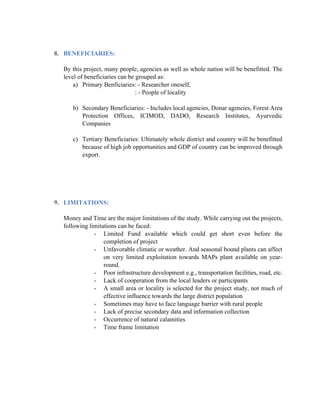The document outlines a research proposal submitted by Himani Chand from the Institute of Agriculture and Animal Science at Tribhuvan University, focusing on the ethnobotanical knowledge and medicinal plant resources in Gurans, Dailekh, Nepal. Spanning six months, the research aims to document the medicinal and economic values of local plants, establish conservation areas, and promote sustainable practices amidst significant challenges from human-wildlife conflicts and market pressures. The study emphasizes the importance of traditional knowledge and aims to enhance local socio-economic conditions through better management of natural resources.
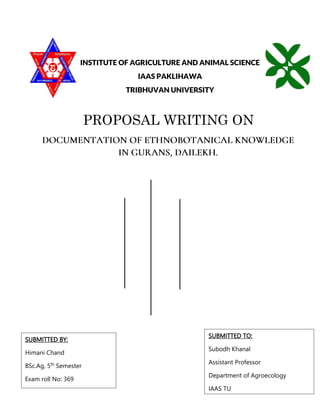






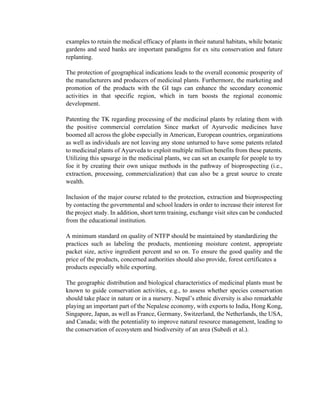
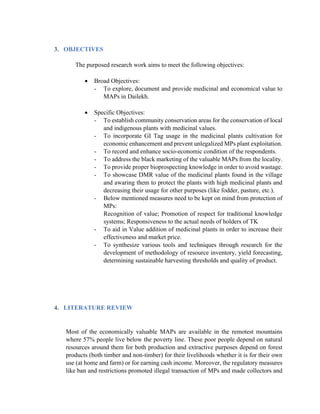
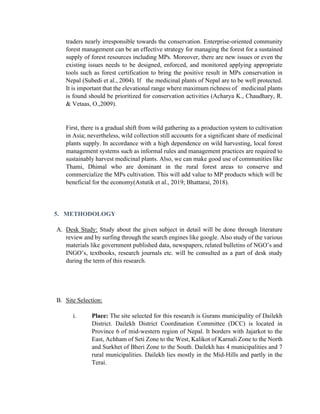
![ii. Morphometry:
- The total area of Dailekh is 1,502 km2.
- Latitude: 28° 50' 8.99" N
- Longitude: 81° 42' 16.79" E
- The lowest elevation point is 544 meter and the highest elevation point
is 4,168 meters from mean sea level. Because of the elevation
differences, Dailekh has three different types of climates:
Tropical up to 1,000 m (16% of area), subtropical from 1,000-2,000 m
(69%) and temperate above 2,000 m (15%).
- The annual rainfall is about 1,500 mm and temperatures vary from 4 ºC
to 34 ºC.
iii. Occupation: Subsistence agriculture, mainly small-scale livestock, is the
main source of occupation and livelihood of the majority of the population,
with 79% of the population active in this sector. Due to low level of
agricultural production, the majority of the households face acute food
shortages for a large part of the year.
iv. Population: According to the National Census 2011 projection, the total
population of Dailekh is 261,770 comprising 126,990 female (48%) and
134,780 male (52%) residing in 48,915 households. Dailekh has an average
population density of around 174 people per square km.
- Life expectancy of the people is 58 years.
- The average literacy rate is about 48% (32% female and 65% male are
literate).
v. Abundance of Medicinal Plants in Study Site:
Although the enumeration of flowering plants in Karnali province is very
limited, the province potentially supports 42% of flowering plants reported
in Nepal. This includes Nepal’s 15% endemic flowering plants. Five
endemic flowering plants are named after places of Karnali province:
Pedicularis muguensis [Mugu],
Astragalus jumlaensis [Jumla],
Meconopsis simikotensis [Simikot],
Malaxis dolpensis [Dolpa] and
Prunus jajarkotensis [Jajarkot].
In case of Dailekh, some of the important and majorly studied MPs and
NTFP can be listed as:
Timur- Zanthoxylum armatum](https://image.slidesharecdn.com/examrollno-220111030343/85/MAPS-proposal-11-320.jpg)



